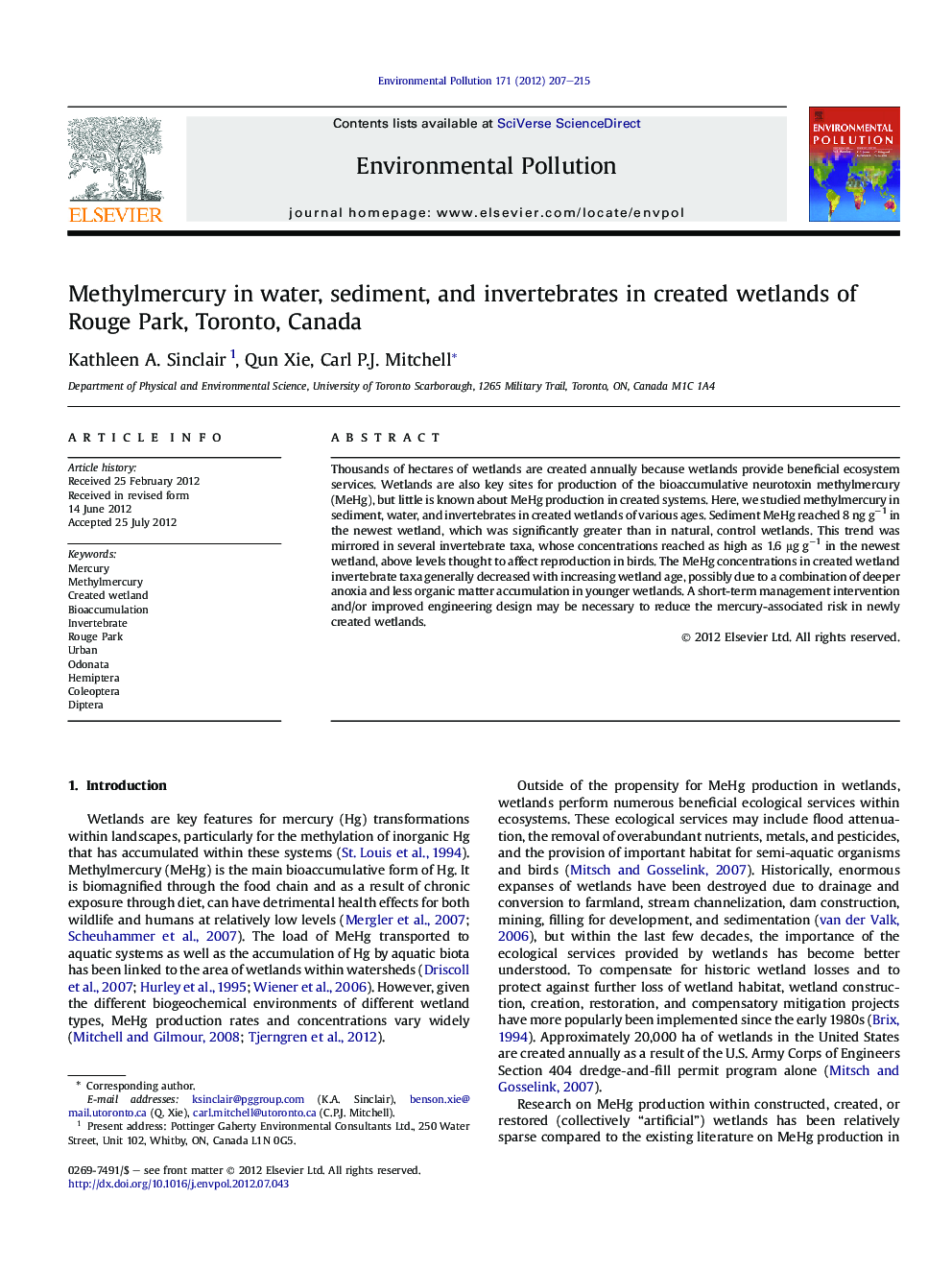| Article ID | Journal | Published Year | Pages | File Type |
|---|---|---|---|---|
| 4424664 | Environmental Pollution | 2012 | 9 Pages |
Thousands of hectares of wetlands are created annually because wetlands provide beneficial ecosystem services. Wetlands are also key sites for production of the bioaccumulative neurotoxin methylmercury (MeHg), but little is known about MeHg production in created systems. Here, we studied methylmercury in sediment, water, and invertebrates in created wetlands of various ages. Sediment MeHg reached 8 ng g−1 in the newest wetland, which was significantly greater than in natural, control wetlands. This trend was mirrored in several invertebrate taxa, whose concentrations reached as high as 1.6 μg g−1 in the newest wetland, above levels thought to affect reproduction in birds. The MeHg concentrations in created wetland invertebrate taxa generally decreased with increasing wetland age, possibly due to a combination of deeper anoxia and less organic matter accumulation in younger wetlands. A short-term management intervention and/or improved engineering design may be necessary to reduce the mercury-associated risk in newly created wetlands.
► Investigated methylmercury accumulation in created wetland ecosystems. ► Concentrations and bioaccumulation significantly elevated in new created wetlands. ► Short-term effect may be due to deeper anoxia, less organic matter in new wetlands. ► Intervention or improved design required to reduce short-term ecological risk.
